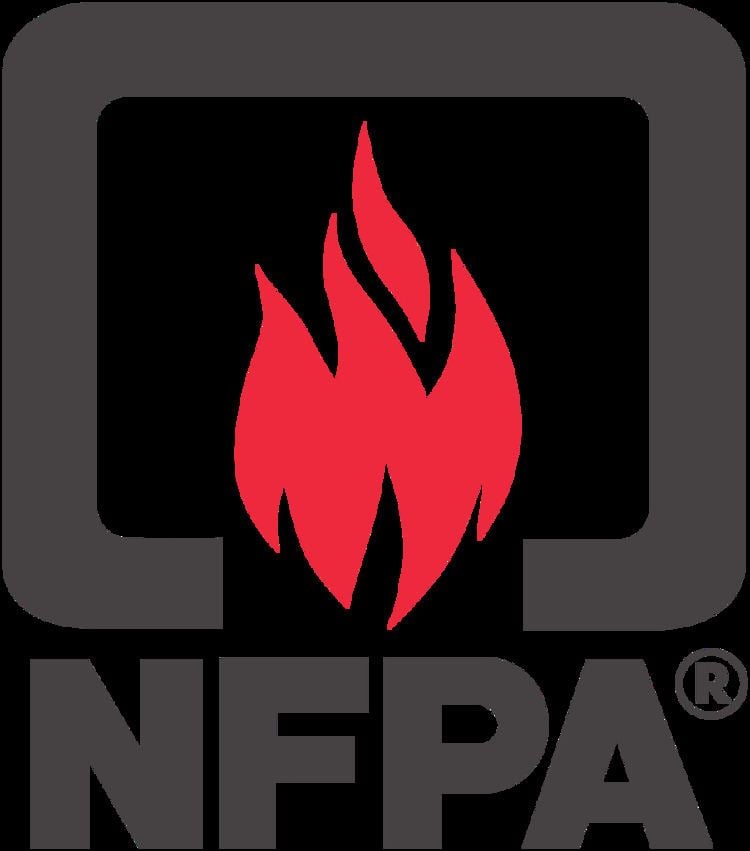Abbreviation NFPA Website www.nfpa.org Headquarters Quincy | Region served United States, Canada Founded 1896 Number of volunteers 6,000 | |
 | ||
Formation 1896; 121 years ago (1896) Similar American Conference of Govern, American National Standard, ASTM International, ASME, CSA Group Profiles | ||
Nfpa journal hazard labeling guidelines in nfpa 704
The National Fire Protection Association (NFPA) is a United States trade association, albeit with some international members, that creates and maintains private, copyrighted standards and codes for usage and adoption by local governments. This includes publications from model building codes to the many on equipment utilized by firefighters while engaging in hazardous material (hazmat) response, rescue response, and some firefighting.
Contents
- Nfpa journal hazard labeling guidelines in nfpa 704
- History
- NFPA today
- Codes and standards
- Public safety education
- Advocacy
- Sparky the Fire Dog
- Access to NFPA codes and standards
- References
History
The NFPA was formed in 1896 by a group of insurance firms with the stated purpose of standardizing the new and burgeoning market of fire sprinkler systems. The scope of the NFPA's influence grew from sprinklers and fire extinguishers to include building electrical systems (another new technology), and then into almost all aspects of building design and construction.
Its original membership was limited to insurance underwriting firms and there was no representation from the industries the NFPA sought to control. This changed in 1904 to allow other industries and individuals to participate in the development of the standards to be promulgated by the NFPA. The first fire department to be represented in the NFPA was the New York City Fire Department in 1905, though their participation has declined steadily since then. Today, the NFPA includes representatives from some fire departments, many fire insurance companies, many manufacturing associations, some trade unions, many trade associations, and engineering associations.
NFPA today
NFPA defines its mission as follows: "We help save lives and reduce loss with information, knowledge and passion."
NFPA membership totals more than 65,000 individuals around the world.
Codes and standards
NFPA is responsible for 380 codes and standards that are designed to minimize the risk and effects of fire by establishing criteria for building, processing, design, service, and installation in the United States, as well as many other countries. Its more than 200 technical code- and standard- development committees have over 6,000 volunteer seats. Volunteers vote on proposals and revisions in a process that is accredited by the American National Standards Institute (ANSI).
Some of the most widely used codes are:
Public safety education
Sponsoring a variety of life-saving campaigns and training programs, the NFPA devotes much of its efforts to protecting lives and property through education. The organization provides many resources for fire, electrical, and life-safety instructions.
The outreach programs of NFPA include:
Advocacy
NFPA oversees the operations of several advocacy campaigns dedicated to increasing fire safety and awareness, including the Fire Sprinkler Initiative, Bringing Safety Home; Electric Vehicle Safety Training Program; the Coalition for Fire-Safe Cigarettes; Firewise Communities/USA; and the Alliance to Stop Consumer Fireworks. NFPA is a founding board member of the nonprofit Home Fire Sprinkler Coalition (HFSC).
Sparky the Fire Dog
NFPA's official mascot since 1951, Sparky hosts his own Web site to provide materials for others (mostly the fire service) to teach children about fire safety. Sparky has been featured in his own series of television public service announcements.
Access to NFPA codes and standards
As part of its commitment to enhancing public safety through the adoption and enforcement of key ANSI codes and standards, NFPA makes all of its codes and standards available for review online by the public. The complete texts of standards documents are available on the NFPA Web site for viewing, but not printing. NFPA codes and standards are widely adopted, because they are developed using an open, consensus-based process. All NFPA codes and standards are developed and periodically reviewed by approximately 7,000 volunteer committee members with a wide range of professional expertise.
In 2013, NFPA with others filed suit against Public.Resource.Org for publishing the full texts of various codes. PRO claims that since these codes form part of US or state law they are not eligible for copyright.
